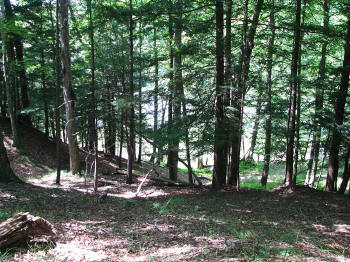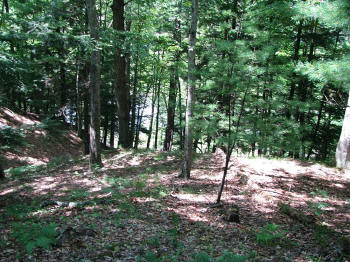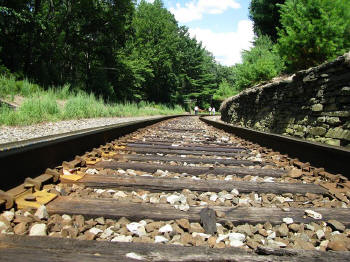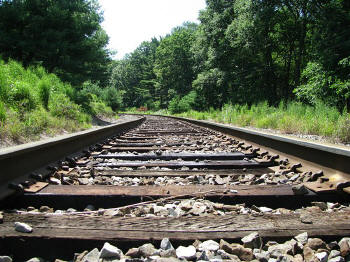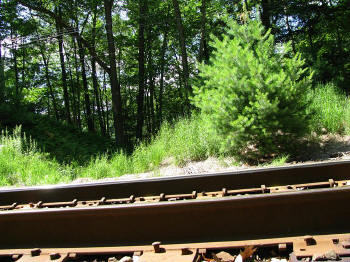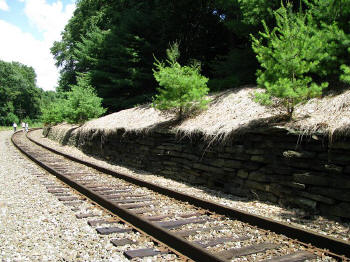|
(2010-21a)
Enlarge
Possible location of burial trenches
At 9 p.m., a train was sent from Port Jervis with provisions, and due to
the kindness of the railroad officials, a New York Tribune reporter was
permitted to visit the scene. Upon their arrival at Shohola around 10
p.m., they found most of the wounded had been brought to the village and
were occupying the freight and passenger rooms and adjoining platforms.
Over sixty injured lay in this locality and several more in the Shohola
House across the road. As the severely wounded passed away, the bodies
were collected in the freight station to be returned to the crash site
for burial |
|
(2010-24)
Enlarge
Looking towards Delaware River
Railroaders and prisoners who survived the wreck dug a trench 76 feet
long, 8 feet wide and 6 feet deep between the track and the Delaware
River. Crude pine coffins were cobbled together with pieces from the
wreckage. The remains of the prisoners were placed four in a coffin. Toward
midnight conventional pine coffins arrived from Port Jervis for the
Union dead, who were laid in individual graves. According to the Elmira
Advertiser, there were 48 Confederate and 17 Unionists buried there |
|
(2010-25)
Enlarge
Looking north
The dead at King and Fuller's Cut continued to be buried throughout the
night until the dawn of the 16th. By 9:00 A.M. on July 16 four more men
had died and were taken to the common grave at King and Fuller's Cut |
|
(2010-26)
Enlarge
Looking south, towards Shohola
There are a variety of estimates as to the exact number of casualties,
depending on the source. During the night, a heavy guard was placed
around the Southerners. Later there was criticism of the railroad for
the quick burial of the dead on the grounds that a more thorough body
identification should have been made. But the mutilated condition of
some of the corpses made this impossible. The July heat and sanitary
conditions demanded the need for burial as soon as possible |
|
(2010-26a)
Enlarge
The following day the track was cleared and a new train made up to take
the prisoners and some of the injured to Elmira. The new train consisted
of twenty cars, the first six being fitted with hay covering the floors.
Seven of the injured would require amputation when they arrived at
Elmira. Within a week of the wreck all surviving prisoners were
delivered to Elmira Prison |
|
(2010-27)
Enlarge
During an inquest held at Shohola, everyone connected with the wreck was
exonerated, including Duff Kent, who gave the coal train the
right-of-way. He should have known the train carrying the prisoners was
on the track. Persistent reports say that he was a drinker and could
have been under the influence of alcohol. He did not take the wreck very
seriously and according to a story, which circulated, he went to Hawly
to attend a dance. The next day the public became so incensed with his
actions that Kent left for parts unknown and was never heard from again |
